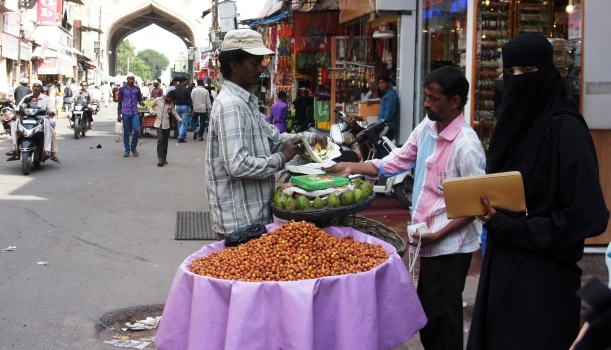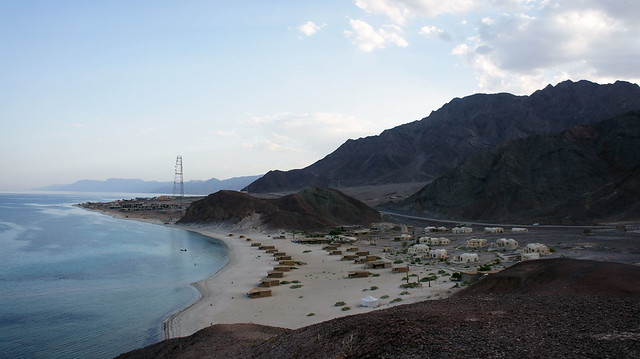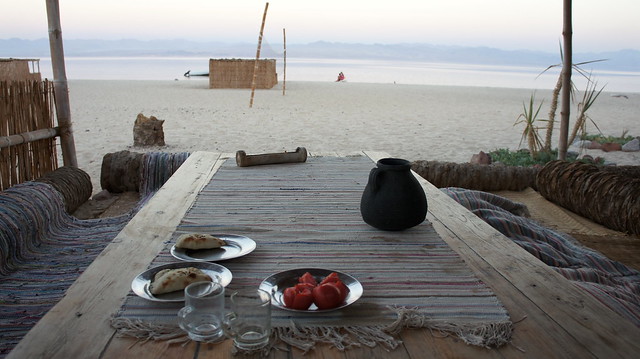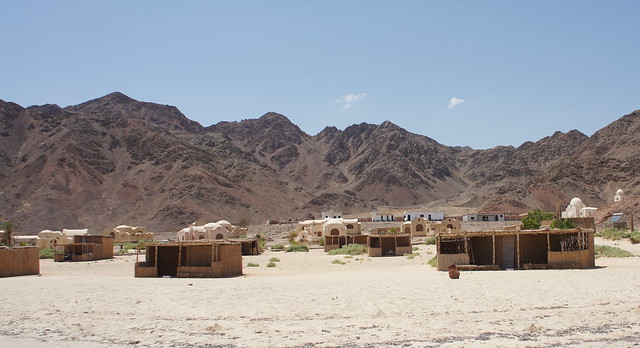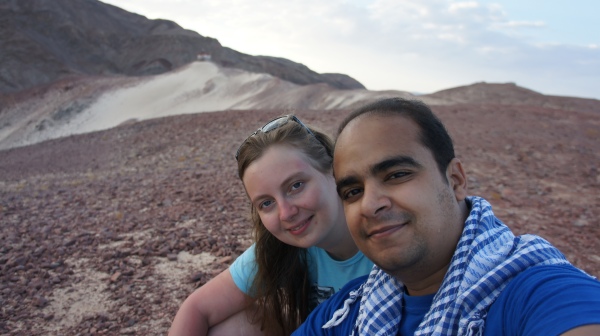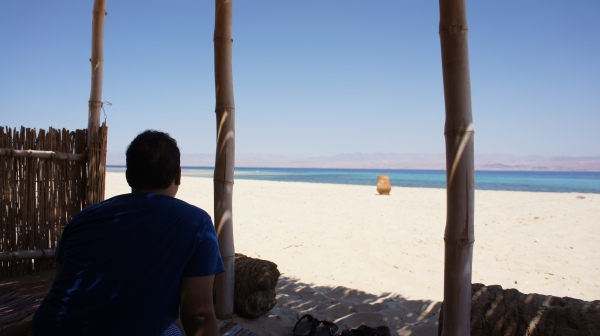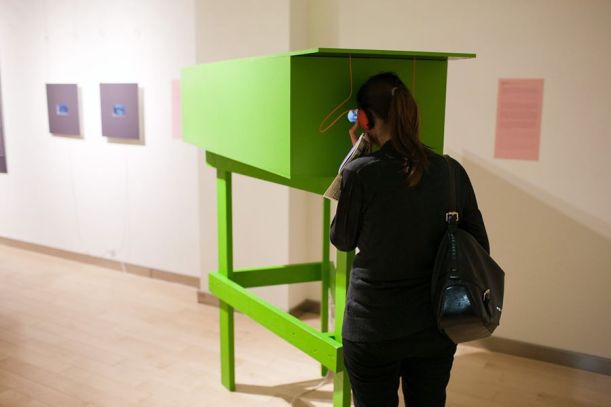Some parents choose to take their children out of mainstream education while others set up learning spaces for their kids. Young people attend democratic learning communities part-time and most determined educators gather evidence for their centre to become an Ofsted registered school. Democratic, self-directed learning communities are growing in numbers around the UK. They all have one thing in common – children are seen as active participants, capable to manage their lives and learning.
What every woman can do to have a great birth experience?
Can we think of #feminism as getting back control over our bodies and #birth? I spoke to Ceri Durham who wants women to take charge of their birth, ask questions to health professionals and know their #birthrights and choices. She has been running Tower Hamlets Positive Birth and Homebirth Support Group for 10 years; it’s a safe space where pregnant women and new mothers meet and discuss birth as a normal part of their lives, not as somethings awful or scary. Women pass knowledge to each other. One person at a time, Ceri is trying to bring change in the birth world.
This is what Newham mums demand from Newham University Hospital
Nehwham mothers organise ‘a feed in’ to protest against shaming breastfeeding and giving formula without mother’s consent on the neonatal ward at Newham University Hospital and get noticed by media and local council. Check out this video to find out what they demand.
This is a vertical video I made specifically for Facebook and Instagram.
Open Source Investigation on Arms Trade between Italy and Saudi Arabia by Reported.ly
Reporeted.ly is a new type of newsroom where journalists, based all over the world, report, verify and investigate international stories emerging on social media and the open web. By using satellite images, tracking flights and maritime routes and crowdsourced citizen videos they were able to follow arms trade between Italy and Saudi Arabia and the use of arms against civilians in Yemen. “This is becoming traditional reporting,” says Malachy Browne, managing editor at Reported.ly. “By applying these methods and tools, we are able to cover a disproportioned amount of stories on what’s happening around the world,” he adds.
The Struggle of Displaced Journalists in Ukraine
Published on Open Society Foundations
When Victoria Kryat, a young journalist from the town of Krasny Luch in the Luhansk region, came to Kyiv in August 2014, she had 300 grivnas (US$12) in her pocket. Her former workplace, a Ukrainian language TV channel called Luch, had been taken over by pro-Russia fighters.
“At first, various military groups were coming and asking us to broadcast them,” she recounts. “Then armed men stormed our office, consisting mainly of female staff, and told us we were hiding [members of the] Pravyi Sektor [a right-wing Ukrainian political party]. They probably had an order to get control of all the media.” Most of her colleagues had to leave the channel and move to other parts of Ukraine.
Two years have passed since the Euromaidan protests in Kyiv ousted President Viktor Yanukovych in February 2014. What followed was one of the most violent years in recent Ukrainian history. Pro-Russian gunmen took control of the Crimean Peninsula, while in the eastern Donbass region, separatist groups declared Donetsk and Luhansk to be independent republics.
As a result, in the cities of Luhansk and Donetsk, a number of media outlets were forced to close down, move their offices to government-controlled territory, or compromise their editorial independence. The annexation of Crimea by Russia and the military conflict in the eastern part of the country led to assaults, censorship, and intimidation of journalists and media outlets. According to the Kyiv-based Institute of Mass Information, the number of press freedom violations in 2014 increased by 50 percent compared to 2013. That was also a year when Ukrainian journalists, fleeing both military conflict and professional intimidation, became internally displaced and were forced to start over in other cities.
“I had to make a choice between freedom and working and living in Crimea. I had to begin my life from zero in Kyiv,” says journalist Serhiy Mokrushyn. While working for the Centre for Investigative Journalism in Simferopol (now based in Kyiv), he and his colleague Vladlen Melnykov were abducted by so-called self-defense forces in June 2014. Mokrushyn is now a host of an independent television program Hromadske.Krym, broadcast online, on cable, and on satellite television. The program has been highlighting human rights violations against the ethnic minority of Crimean Tatars.
“Now we cannot purely do reporting, we have to be a platform between civil society and the government,” he says. The Crimean journalist also recognizes a need for independent and analytical information in the annexed territory. Most of the Ukrainian media outlets, including the Hromadske website, are blocked in Crimea, creating a media vacuum that is populated by biased news and pro-Russian propaganda.
Today there are 1.7 million internally displaced people from Crimea, Donetsk, and Luhansk, according to the Ministry of Social Policy. People from Crimea started to flee prior to the unconstitutional referendum on the annexation of the peninsula in March 2014, while those from the eastern regions left their homes following escalation of the conflict between the Ukrainian army and pro-Russian separatists in May 2014. According to an estimate by the National Union of Journalists in Ukraine, there might be up to 600 displaced media workers, with most of them coming from the Donbass region and around 100 coming from Crimea.
Broadcast reporter Maria Ivanova was working for the regional channel Donbass in Donetsk. The scenario that played out there was similar to what happened in Luhansk. After several visits by armed men, the channel’s management banned employees from coming to work for their safety. Part of the staff was then moved to Dnipropetrovsk.
“We thought this will last for a couple of months,” she says. “Then I saw that nothing is changing and those territories are becoming frozen conflict zones. I started to worry because I did not have a proper place to live for me and my family.” Maria’s contract was eventually terminated and she had to make her living from a scarce unemployment benefit for five months before finding temporary work at another channel.
In addition to individual journalists, newsrooms formerly based in Donetsk, Luhansk, or Crimea have become exiled media in their own country. They struggle to reach audiences in a territory that is no longer part of Ukraine. “No one is talking to people in the occupied territories. Private media outlets are forbidden. Radio is the easiest way to get there. State [pro-Russian] controlled media broadcast concerts and celebrations. Still, people have a need for critical information because the life doesn’t get any better,” says Serhiy Harmash, editor in chief of the Eastern Ukrainian news site OstroV.
Many displaced people still have families left in the occupied territories. While few journalists are able to return due to being blacklisted by separatists, some still try to visit their loved ones. When Victoria Kryat went back to Krasny Luch to visit her mother for the first time in a year, they spent most of the time indoors, fearing for their safety. And while Victoria made it back to Kyiv, the former Luch reporter still gets harassed on social media. “They call me Kyiv’s spy,” she says. “It looks funny, but it is sad. We did a lot for the city, and it hurts how they treat us now.”
Educated women in India face more violence
In India I met and interviewed a strong and outspoken woman. She is very honest about suffering and abuse she has faced, but she does not lose hope and is fighting for change.
“If you ask any women, whether it is a women in power or a women in poverty, each have their stories of violence and pain,” says Moumita Biswas, executive secretary of All India Council of Christian Women.
Moumita is often vocal and direct in her statements on various types of violence. Being part of women’s wing of National Council of Churches in India (NCCI), her work involves advocacy on gender justice, women theology, minority and indigenous women’s rights.
National Council of Churches in India represents 14 million protestant and orthodox Christians. After Hinduism and Islam, Christianity is the third largest religion. There are 24 million of Christians of various denominations, around 2,3 percent of the total population.
In the video, filmed at by Henry Martin Institute of Interfaith studies in Hyderabad, Moumita tells her personal story of violence and sexual abuse and sheds light on what it is to be a woman in India.
“Always I am labelled as a fighter woman. Even if you are strong and bold, you are labelled and stigmatized. I sometimes felt, if I kept quiet, I would have faced less violence,” executive secretary admits. She manages to defy every stereotype. In addition to her professional achievements, Moumita is a single divorced mother, taking care of her eight years old daughter.
On various occasions executive secretary of women’s wing of NCCI has had to reaffirm – violence against women is present in any circumstances, disregarding social or professional background or wealth. Victims are often blamed for the violence they face, rather than their perpetrators. A number of times women in leadership positions are being forced to adopt male behaviour or their views are not taken into consideration.
While education is considered the leading indicator of improving women’s status, sociological research shows that it might not be the only obstacle. According to a recent study, Indian women who are more educated than their husbands, earn more, or who are the sole earners in their families are more likely to experience violence from their partners than women who are not employed or are less educated than their spouse.
Churches in India have a great role as civil society organisations. Moumita has been working on various initiatives to raise awareness on sexual harassment, child protection and gender justice education. Her aim is to “end the culture of violence”. All India Council of Christian Women launched this year a 365 days Zero tolerance to gender Based violence: Make it happen now! The campaign included activities to honor women police officers and ask for women-friendly police stations, men speaking about positive masculinity and highlighted the 16 Days of Activism against gender based violencea and White Ribbon movement – men led initiative to end violence against women.
Increasing rape rate has put India among the most dangerous countries for women. The Delhi case where 23 year old woman was gang raped on a private bus and died of injuries later caused local and international outrage and protests against the state negligence in 2012. The girl went out with her male friend and took a bus after several rickshaw drivers refused to take them aboard. In a number Indian cities taxis refuse passengers a short distance drive as this will not bring a high fare. As part of Thursday’s in Black campaign women’s wing of NCCI approached rickshaw drivers in Calcutta asking to always take women aboard in the evenings. “We don’t need big money to do this. Out of ten drivers we have spoken to, five will remember”, executive secretary is optimistic.
In addition to social outreach, Moumita is a theologian and uses scriptures as a reputable reference and empowerment tool. She interprets Bible from a woman’s perspective addressing such taboo topics as menstruation and hygiene, women trafficking and prostitution, sexual violence and divorce. She leads Bible studies as a professional performer and audience is taken by her empathy and ability to step into women’s shoes. “Our theology must change,” Moumita affirms, referring to dominating interpretation of scriptures.
A story of simplicity and fulfilment in Egypt’s South Sinai
There is a remote place in Egypt’s beautiful Sinai peninsula that seems an example of symbiotic co-existence of nature’s simplicity and human innovation. Not without a reason it is called Basata in Arabic meaning both – happiness and simplicity.
Mountains, desert and the Red Sea are surrounding a dozen of bamboo huts and clay chalets. It is claimed as one of the best beaches in the world. The water next to the coast in summer is as warm as in your bathtub. While swimming or snorkeling next to a coral rife with enjoy a company of colourful fish and when stepping out of the water, be careful not to touch a sand coloured crab who is escaping from you and burring himself a hole. Basata camp is an ecolodge – a place where owners and guests are taking care of natural resources, using solar energy and recycling waste.
It is a family enterprise and a community built on mutual respect and trust. Located between Nuweiba and Taba in South Sinai and being almost 500km from Cairo, getting there is an adventure itself so only the most committed and determined come. It is a place to reconnect with the nature and reflect.
Basata story starts 30 years ago when a young civil engineer from Cairo Sherif El Ghamrawy decided to break his daily routine and define the real priorities in life – nature, health, happiness and self-fulfillment.
“I got into this circle as everyone does– going to work in the morning and coming back in the evening. What had happened?” he asks himself in a TEDx talk. “When I was a student, I had big dreams and priorities. Where did they go?” He stopped for a moment to reflect: “My priorities are: to be happy, to have a good health, to live in a good environment and breath fresh air, to have success and in the end to have some money.”
Sherif acknowledged that as a beginner engineer he had some money and had started to gain some reputation. However, he was not happy and was suffering from Cairo’s pollution. He defied all the expectations of a prescribed successful engineering carrier Egypt and decided to start his own project in Sinai. At that time time where there was only one hotel on the whole Red Sea area. “I took a decision to emigrate from Egypt (Cairo) to Egypt,” he says.
Taking this decision was the easiest part, the real struggle had yet to begin. It took four years of bureaucratic ping-pong with local and national authorities to get the license and all the paperwork done. With a bit of luck, he managed to get the approval when the new government has just been installed. But that was not the last step. With the outset of the building works, he started receiving threats from the local Bedouin leaders. He was still considered an outsider, ‘a stranger from Cairo’ wanting to bring tourists without considering the local sensibilities. In the end he managed to get an agreement with them as well and now he is proudly wearing a traditional Bedouin gown while chatting with his guests at dinner time in Basata. He has a great sense of empathy and always finds a common language.
After a couple of years managing the camp, Sherif got married to a German women Maria Wuerfel who shared his dreams and priorities. The first four years of their married life, they lived in a bamboo hut on the beach, the last two of which – with their firstborn daughter. “They truly where the happiest years of my life,” says Sherif.
The first time I went to Basata I could not imagine such a place exists in an overcrowded, polluted and commercialized Egypt. But Sherif made me think of Egypt beyond Cairo and usual Red Sea tourist spots. I could feel the peace of Latvian forest there. Even Latvian Ambassador Iveta Šulca has visited Basata to discuss EU funding for Egypt’s development.
Each time we are getting back to the camp, I am driven to reconsider my own choices and priorities. What is my daily routine? What do I need for a general feeling of happiness and self-fulfillment? After years of searching for the meaning I am now looking for peace and a stable ground under my feet.
I want to be able to create and feel appreciated. I want to express and challenge myself and believes and convictions of others in a meaningful discussion. I am eager to fulfill my ambitions and dreams. I want my ‘work’ to be an integral part of my personality. I want a balance between routine, restriction and creativity.
I want to feel close to the nature, of course. I want to walk on the streets undisturbed and be able to find an escape to a forest when I wish and need it. I want to have a garden and eat healthy.
I have been looking for the right country and place to have it all and hope I have found it now in UK. While part of me will stay forever in Egypt and Latvia, I have to admit nothing happens without compromises.
Latvian artists’ performances focus on disputable urban developments in Riga
While central part of Rīga, the capital of Latvia, is a renown tourist attraction with its Medieval Old Town and the largest number of Art Nouveau buildings in Northern Europe, Rīga’s suburbs are not so tidy. Only few bus stops out of downtown and cityscape becomes more confusing – post-soviet industrial legacy blending with new commercial ‘developments’, some of which causing ecological and financial disasters. For example, to provide a new building for the State Revenue Service (Valsts ieņēmumu dienests), the former government of Latvia signed a corrupt deal with private property developers and is now paying 532 thousand euros of taxpayers money in monthly rent (6,4 millions per year). And yet the same institution is asking citizens not to avoid taxes? This can happen only in Latvia.
Latvian performance artists this year decided to bring into spotlight places in Rīga which have seen many alterations during the course of history and recently are facing the inevitable consequences of profit-driven ‘development’ where just governance or sustainable and healthy environment is not a priority. In five performances called “The last picnic” (Pēdējais pikniks) starting in early spring and ending late autumn, organised by sculptor Gundega Evelone and friends, artists called participants for the last outdoor meal in various unusual places before they are completely converted for commercial of residential purpose.
I had a chance to take part and produce couple of videos from ‘the 3rd last picnic‘ that took place between Mežaparks and Čiekurkalns districts in Rīga this July.
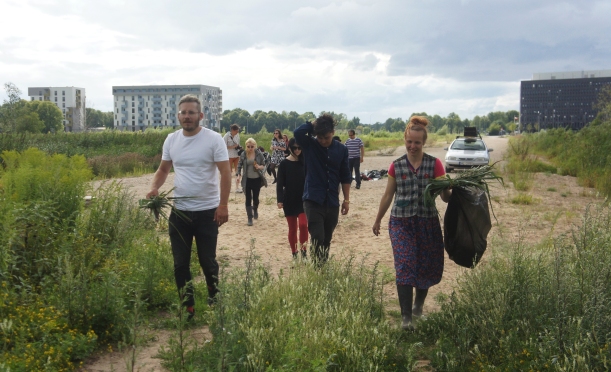
Buildings in the background appearing in the middle of nowhere like mushrooms in the forest, the one on the right is the State Revenue Service still spending millions for taxpayers money in rent. Photo credit: Ilona Sābera.
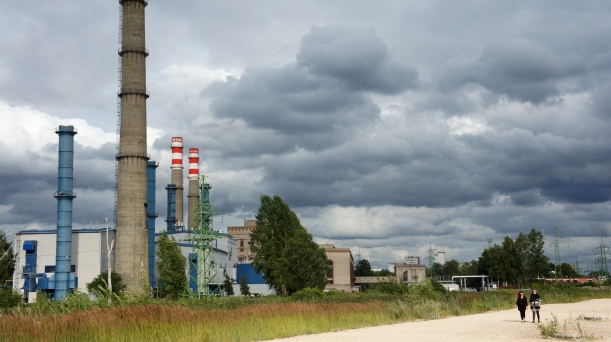
In this photo, taken from the opposite side, there are the old and the new building (blue) of TEC-1, the first heath power-plant in Latvia. The old part built in fifties is now a legacy of large scale industrialization taking place across the Soviet Union. Photo credit: Ilona Sābera.
In the first performance, Marta Elīna Martinsone is reading poetry by the famous Latvian Facebook cat Tors Traktors about a very emotional and sarcastic pet.
In the second performance, Gundega Evelone is telling a story about the sad face of a seagull with detached wing that was dying for three days alone in a harbor. The artist asked participants to make a viking burial boats to remember the heroic seagull.
Latvian proverb says: “Don’t cut the branch you are sitting on,” meaning do not damage the useful resources, such as the environment. In the third performance Alise Šaburova falls off the tree as she was sawing the branch she was sitting on. Alise falls into a swamp that was created unintentionally by engineers wanting to dry the surrounding land by closing a rill into the underground water pipes. But the rill violently broke out creating a wild sewerage swamp.
Video and photo materials from all five ‘Last picnics’ are displayed at National Library of Latvia in a retrospective exhibition organised by Latvian Centre for Contemporary Art and dedicated to one of the first Latvian multimedia artists late Hārdijs Lediņš. The exhibition, opened to public a couple of weeks ago, is available till 30th December.
Erased time
If one my previous reflection on political and social developments in Egypt followed Cairokee rhythm of music and lyrics, the soundtrack of this post will be Dalida. She an Italian Egyptian singer from 60-ties and 70-ties, longing for Egypt and the beauty of Alexandria.
Have you ever experienced a feeling when a certain period of time is erased from memory? When you return to a place that was once part of your well known routine and then all of a sudden the whole year spent away is shift-deleted? Continue reading
Rescuing children with albinism in Tanzania

Martha Mganga and her husband Edmund Mganga working to end stigma against people with albinism in Tanzania through the video “Watu Kama Sisi” (“People like us”).
Published on Anglican News.
“Peace starts at home. Albino children need to be accepted by their family first, then the village and finally the government,” says Anglican Martha Mganga, director and founder of Albino Peacemakers, a non profit organisation based in Arusha, Tanzania. Martha has been educating families about albinism and rescuing people in danger for almost 30 years. Continue reading

